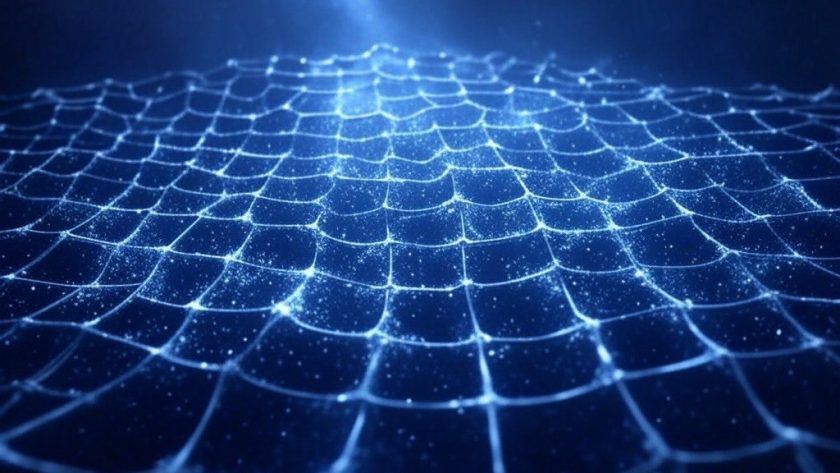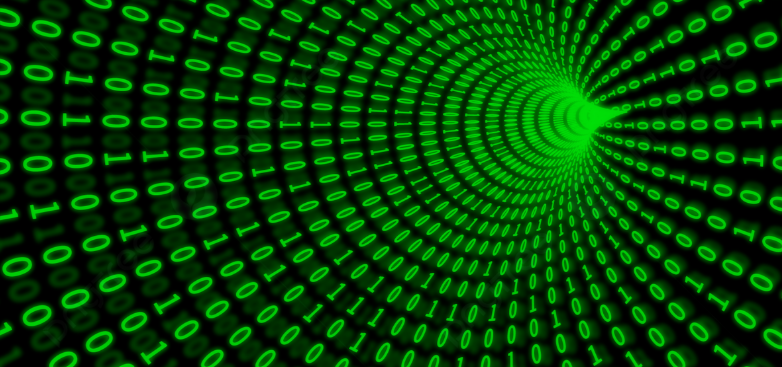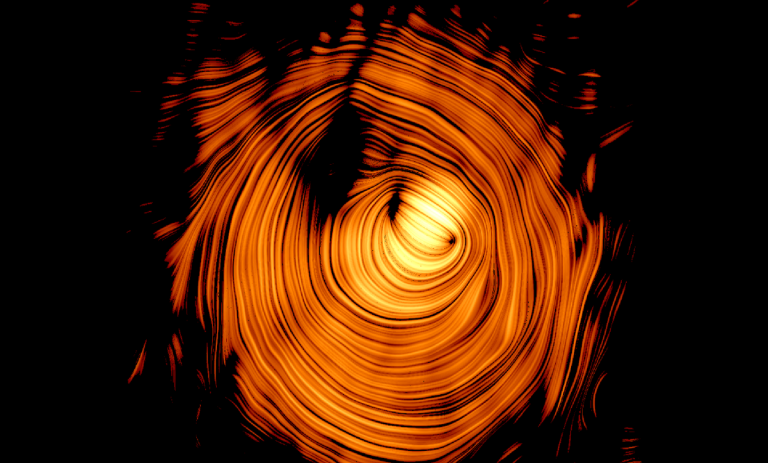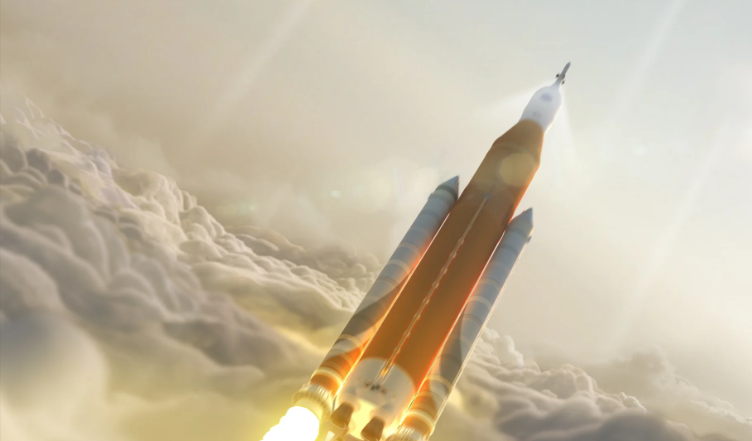Isaac Newton figured out how gravity behaves way back in the 1600s. He could describe what it did, how apples fall, how planets move, but he didn’t really know why it worked. Even he wasn’t totally satisfied with it. One of his ideas was that maybe invisible particles were pushing things together from all directions. That didn’t hold up, but the question remained, how does gravity actually happen?
Fast forward to the early 1900s, and Einstein turned everything upside down. He said gravity isn’t a force at all. Instead, it’s what you get when space and time curve around massive objects, like a bowling ball sitting on a trampoline. Drop something nearby, and it rolls inward, not because it’s being “pulled”, but because the shape of space itself has changed. That model works beautifully, especially for big things like stars and galaxies. But it breaks down in extreme places, like the center of black holes. That’s where physics gets weird, and where the hunt for a deeper explanation continues.
Now here’s where things get interesting.
Some physicists think gravity might not be one of the universe’s core ingredients at all. It might be more like a side effect, something that emerges when lots of tiny things interact in the right way, quite similar to how heat elements are, just a bunch of particles jiggling around. This idea gives rise to “entropic gravity”. It connects gravity to entropy, in simple words, the idea that systems naturally drift toward disorder. A melted ice cube, a messy room, a spilled drink, all examples of increasing entropy. The universe seems to prefer chaos, statistically speaking.
The First Model: Gravity from an Invisible Quantum Grid
So earlier this year, physicist Daniel Carney, staff scientist at Berkeley National Lab, and his team came up with two new models. They’re not polished theories, but more like thought experiments to see, could gravity be explained using just entropy and quantum bits?
In the first model, space is imagined as being filled with an invisible network of quantum bits, called qubits. These aren’t like the ones in a quantum computer, but you can think of them as tiny units that store quantum information. When you place a heavy object in this invisible grid, the nearby qubits start aligning with it. Drop a second object close by, and the same thing happens again. Now you’ve got two organized patches in a sea of randomness.
But nature “wants” those patches to shrink. That’s because the rest of the system, those qubits, wants to go back to being messy. So, to reduce the amount of order, the system pushes the two objects together. From far away, it looks like gravity. But under the hood, it’s just the system trying to return to higher entropy.

The Second Model: No Grid, Just Free-Floating Qubits
The second version of the model drops the grid entirely and lets the qubits float freely in space. In this case, the energy each qubit can hold depends on the distance between the objects. When those objects get closer together, more qubits are needed to store that same amount of energy. That increases entropy too, and again, the system “prefers” the objects to move closer.
Is this testable?
A lot of people ask, “Is this testable?” Surprisingly, maybe. One idea is to use an object that exists in two places at once, something quantum mechanics says is possible. The question is, would that object also create gravity in both places? Or would the qubits collapse it into one definite location? If we can build an experiment like that, and some labs are also trying, we might be able to tell if this model holds up.
Why the Models Fall Short
These ideas are super speculative. There’s no proof yet that these qubits even exist. The math had to be carefully tuned to make the models mimic Newton’s law of gravity, and they don’t yet match the full complexity of Einstein’s version. As one physicist put it:
“They explain the part of gravity we already get, but they don’t help with the parts that still confuse us.”
But that doesn’t mean they’re useless. These models are valuable because they raise new questions we can try to answer. That’s often how science moves forward.

No Proof, Big Gaps, Yet Gravity Might Still Surprise Us
Another question people often ask is, “Does this change anything in daily life?” Not really, not yet. Your phone’s GPS, satellite launches, and rollercoasters all still work using Newton and Einstein. But in the long run, understanding gravity more deeply could lead to big things, just like understanding electricity did a century ago.
Gravity is usually thought of as a smooth force that pulls things together. But if gravity is actually the result of many tiny, random events combined, then it might not be perfect even all the time. Instead, there could be very small, almost invisible variations or tiny waves. If scientists find these small changes, it might mean that gravity isn’t just a simple force but comes from something more complex happening underneath.
And maybe the wildest idea of all is, what if space and time themselves aren’t fundamental? Some researchers think that they might emerge from these deeper interactions between qubits, just like how a 3D hologram can emerge from a flat surface. In that case, space might be something the universe “builds” out of information.
Leonard Susskind has been one of the main voices pushing this idea of a three-dimensional universe or a holographic universe. He even takes it a step further and suggests that entanglement, the quantum link between particles, might be what literally holds space together, in his words,
“Entanglement builds geometry”.
Even with ideas like this gaining traction, most physicists aren’t ready to abandon Einstein. But they’re definitely curious. Gravity has worked its way into every part of modern physics, but we still don’t really know what it is. And that makes it one of the most exciting mysteries left.
If nothing else, it’s a great reminder, just because something feels familiar doesn’t mean we truly understand it.
Source: Quanta Magazine



